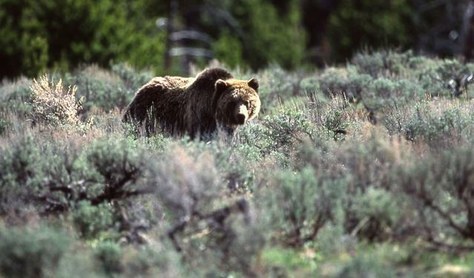
The National Park Service (NPS) and the United States Fish and Wildlife Service (FWS) are seeking public comment as they evaluate options for grizzly bear recovery in the North Cascades.
Three years ago, as part of their Grizzly Bear Restoration Program, the agencies announced they would consider reintroducing a small number of grizzlies to their native stomping grounds in the wildlands northwest of Seattle. (Currently, grizzlies are practically nonexistent in the area.) Now, after gathering initial feedback from the public and working with an interagency planning team, they’ve released their Draft Grizzly Bear Restoration Plan / Environmental Impact Statement.
The draft EIS outlines four recovery alternatives, which range from “No Action” to “Expedited Restoration.” During the public review period – which runs through March 14, 2017 – individuals, groups, and agencies can voice their opinion on the proposed alternatives.
There will be several public meetings as well as webinars. These sessions will be conducted in an open-house format and include informational presentations. Written comments can be submitted electronically, by mail, or at a public meeting.
The agencies have released a PDF that outlines all the details and how to participate. Check it out here: Draft Grizzly Bear Restoration Plan / Environmental Impact Statement.
Add a comment
Log in to add comments.Please follow the conversation on Mountain Project, forums , pacific northwest.
If the yellowstone eco system is any analogy for the way the cascade bear recovery area will be ran nearly half the area could be closed to humans. The resulting loss of Cascade recreation to all users would be stagering.
Please also read at least the summary of the recovery plans, attend a webinar, and / or read the executive summary of the EIS before forming your opinions. The proposal options are well thought out; the area is over 6 million acres, mostly wilderness; potential release sites are remote; in 2 alternatives it will be 60-100 years before the target population of 200 might be reached. Also adaptive management is included in two of the alternatives, and special management provisions are sought to allow a wide range of actions if problems arise with individual animals. No long term closures of any of the roads, trails, or land is in the plan.
It is entirely possible to recreate in areas where bears are present by following appropriate procedures. The impact to recreationists will be minimal. For another example, check out the Cabinet-Yaak wilderness; a much smaller area with only about 50 bears and there has not been a single negative human encounter in the 30 years since introducing them according to FWS biologists. I hiked there last year and plan to go again this year. I have hiked in Glacier and Denali also with minimal impact from the presence of the bears(temporary trail closures; minor route changes to avoid bears we sighted or to avoid dense brush.)
I am not familiar with Yellowstone so will need to become more educated on that point.
I support Alternative A of the North Cascades Grizzly Reintroduction Plan which allows grizzlies to populate on their own. Conservation Northwest reports the population currently at 10. WTA estimates the number of hikers at 2.7 million and growing. Maulings by grizzly bears seem to be increasing even when hikers are doing the right things. As a regular hiker and backpacker this will increase my and all other hikers’ risk of injury or death. In a time of increasing world population it seems unnecessary to increase the population of aggressive apex predators in our state.
It is a very different feeling to be in a nylon tent and think about a grizzly versus being in a house in a city.
In late August 2015 I was backpacking just outside of Yellowstone National Park (where a hiker experienced in hiking in Yellowstone was killed by a grizzly bear this past summer 2015). I had to wear bear spray and carry an air horn. The bear spray weighs over 10 oz and is difficult to handle. We were advised to make noise constantly and be alert. We like to chat or be silent so we can look at the beautiful scenery. Instead we were hyper alert watching for bears. The experience was unpleasant and uncomfortable. It makes us reluctant to hike, much less backpack, in grizzly country.
The North Cascades Grizzly Bear recovery zone includes the entire Alpine Lakes, Glacier Peak, and Pasayton Wildernesses as well as much of the federal land north of I-90. A trail in northeastern Washington has already experienced closing (Gypsy Peak) due to grizzly bear activity.
 The Mountaineers
The Mountaineers